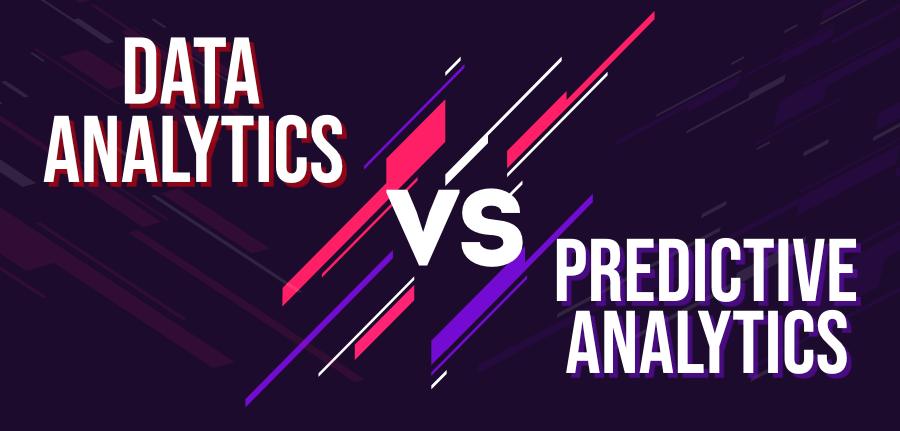数据分析:它是通过对原始数据过滤和应用所需的转换和模型来推断逻辑集和模式的过程。可以遵循以下步骤来探索数据的行为模式并得出必要的结论。
市场上可用于数据分析的顶级工具是 R Programming、 Python、SAS、Tableau Public、KNIME、Apache Spark、Excel、QlikView 和 OpenRefine。
预测分析:它包括通过研究当前和过去的数据趋势来预测未来的结果。它利用数据建模、数据挖掘、机器学习和深度学习算法从数据中提取所需的信息,并为未来规划行为模式。
一些用于预测分析的行业工具是 Periscope Data、Google AI Platform、SAP Predictive Analytics、Anaconda、Microsoft Azure、Rapid Insight Veera 和 KNIME 分析平台。

下表列出了数据分析和预测分析之间的差异:
| Features | Data Analytics | Predictive Analysis |
|---|---|---|
| Definition | Inspecting and refining data to draw conclusion from dataset. | Examining and operating the current and past data trends to infer pattern for making predictions based on it. |
| Objective | Utilized to make data driven decisions. | Utilized for risk evaluation and prediction of future outcomes. |
| Approach | Traditional Algorithmic and mechanical processes are used to build deep insights on data. | Advanced computational models and algorithms are used for building a forecast or prediction platform |
| Procedure | Raw data is collected, cleaned, structured and transformed to derive data product. | Clean data is used to build predictive model which is later deployed and monitored to check progress. |
| Outcome | The outcome is based on customer requirements. It may or may not be predictive. | The outcome is a reliable predictive model generated by testing hypothesis and assumptions. |
| Prerequisite | Data Analyst requires strong statistical knowledge. | Predictive analytics requires strong technical and fundamental statistical knowledge. |
| Industry Application | Fraud and Risk Detection, Delivery Logistics, Customer Interactions, Digital Advertisement etc. | Sales Forecasting, Crisis Management, Analytical customer relationship management, Clinical decision support systems (CRM)etc. |
| Application for Data Scientists | Utilized to verify models, theories and hypothesis. | Utilzed to build confidence in predictions by using specailzed models. |